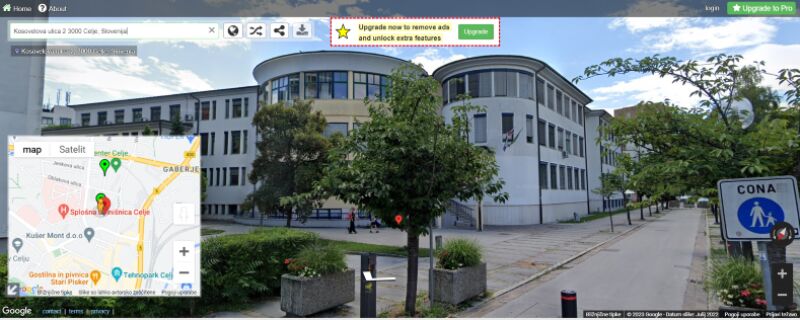Type
Best Practice
Title
Google Street View
Rating
Click on a star to rate the resource. Only registered users can rate resources.
Description
Google Street View is a technology featured in Google Maps and Google Earth that provides interactive panoramas from positions along many streets in the world. It was launched in 2007 in several cities in the United States, and has since expanded to include cities and rural areas worldwide
Target audience
students, teachers, accompanying persons
Area of study
tourism, foreign languages, Erasmus + mobilities, cultural preparation
Competences/Skills that you will acquire
Geographical Knowledge
Cultural Awareness
Historical Understanding
Language Proficiency
Critical Thinking
Research Skills
Environmental Awareness
Spatial Awareness
Digital Literacy
Data Interpretation
Problem-Solving
Collaboration
Analytical Skills
Global Perspective
Interdisciplinary Learning
Resources/Tools used/Links
Comments
Here are some ideas on how to use Google Street View for educational purposes:
Virtual Field Trips: Take students on virtual field trips to explore different regions, cities, or landmarks around the world. This can enhance their geographical knowledge and provide a real-world context for various subjects.
Historical Exploration: Use Google Street View to explore historical sites and landmarks. Students can "visit" places of historical significance, gaining a deeper understanding of historical events and cultures.
Cultural Studies: Immerse students in different cultures by virtually walking through streets in various countries. This can help them understand cultural diversity, traditions, and daily life in different parts of the world.
Geography Lessons: Teach geography concepts by having students explore geographical features, landscapes, and topography using Street View. This hands-on experience can make geographical concepts more tangible.
Language Learning: Incorporate Street View into language lessons by exploring streets and neighborhoods where the language is spoken. This provides a real-world context for language learning and cultural understanding.
Literature and Writing: Inspire creative writing or literature analysis by having students explore settings from novels or stories using Street View. They can describe the environment, imagine scenes, or even create their own stories.
Environmental Studies: Explore environmental issues by examining different ecosystems, natural landmarks, and human impact on the environment through Street View.
Urban Planning: Engage students in urban planning projects by analyzing city layouts, architecture, and infrastructure using Street View. They can design their own urban plans based on real-world examples.
Science Expeditions: Use Street View to virtually visit places related to scientific exploration, such as geological formations, ecosystems, or scientific research centers.
Mathematics and Measurement: Incorporate Street View into math lessons by having students calculate distances, angles, or areas of buildings and landmarks visible on the streets.
Social Studies Investigations: Conduct investigations into social issues by exploring different neighborhoods and discussing factors such as economic disparities, urban development, and social structures.
Current Events Discussions: Stay updated on current events by virtually visiting locations where significant events are taking place. This can provide context and relevance to news discussions.
Remember to consider privacy and ethical considerations when using Google Street View in the classroom, and ensure that you have the necessary permissions and guidelines in place.
Contact
Greta Jenček, greta.jencek@ssgt.si
Media
